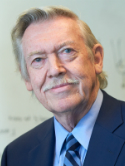| Abstract: |
We describe a liquid culture system allowing the long-term maintenance and differentiation of human marrow monocytes into well-developed, lipid-containing macrophages, and we show that these cells produce a regulating activity that enhances the colony formation induced by granulocyte-macrophage colony-stimulating factors (GM-CSF). Adherent, low density (<1.074 g/cm3) human marrow cells were used as a source of monocytic cells. Of 12 different culture conditions tested, α-medium supplemented with 20% horse serum and incubation at 37°C provided the best conditions for macrophage development, adipogenesis, and long-term culture. Neither insulin (1 to 10 μg/ml) nor hydrocortisone (10-6 M) improved the lipid accumulation in cultures containing horse serum. Trypsin was employed to remove fibroblasts without detaching monocytic cells from the marrow-derived adherent cell layers. Marked structural and functional changes characterized the transformation of monocytes into lipid-containing macrophages. Cell enlargement up to seven or eight times by 21 to 28 days of culture was associated with an increase in small and medium-sized lipid granules, as well as in acid phosphatase and nonspecific esterase activities. Ultrastructurally, there was an increase in the number of mitochondria, Golgi apparatus, lysosomes, rough endoplasmic reticulum, and lipid inclusions, which remained of small size and did not coalesce to form larger inclusions. The absolute quantity of Fc receptors, Ia antigens, and antigens recognized by monoclonal antibodies 61D3 and 63D3 also increased as a function of cell size. As marrow monocyte-macrophage differentiation proceeded, a rapid decline in GM-CSF production was accompanied by an increase in an activity that by itself had no capacity to stimulate colony formation in CFU-GM cultures devoid of GM-CSF, but did enhance the colony formation induced by optimal concentrations of GM-CSF. Neither the enhancing activity nor its production was related to the horse serum present in the culture supernatants. The morphology of colonies enhanced by this activity was not different from the morphologic spectrum in nonenhanced cultures. This granulomonopoietic enhancing activity (GM-EA) represents another positive feedback regulator of hematopoiesis derived from cells of the monocyte-macrophage system. |




